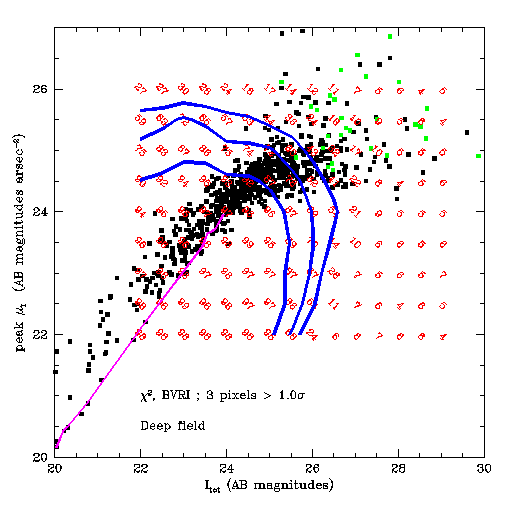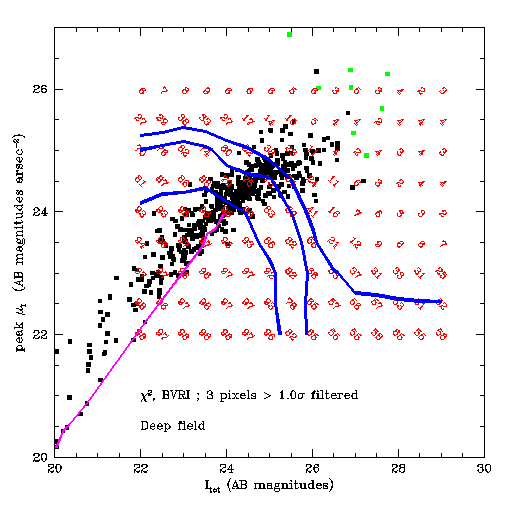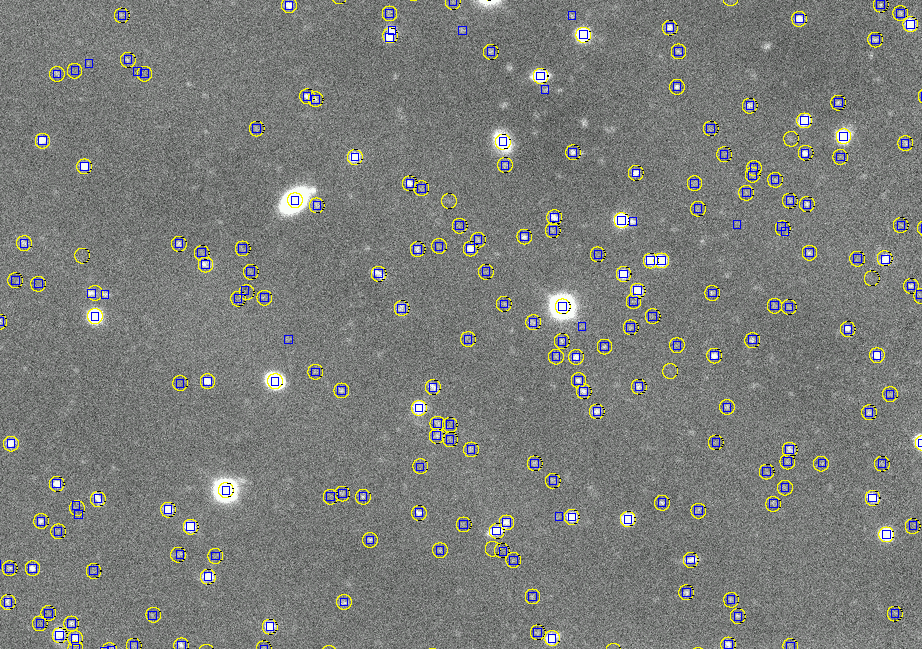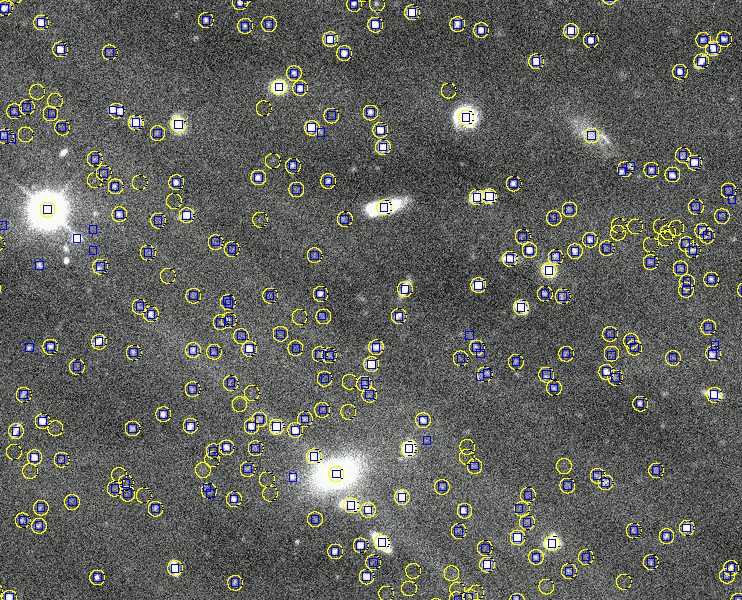

| SExtractor has the option to convolve images with a filter (a Gaussian for example) before detection. The question is, should one use it? Although the question was looked at before (see here) in response to work from Henry McCracken, here are some more thoughts. The final result would appear to be that it doesn't matter much wether one filters or not. |
There are two tests:
|
Simulations:The details of the simulation procedure are the same as before.The following graphs are plots of surface brightness in the I band vs. total I magnitude. The black dots show detected galaxies. The red numbers give the completeness levels (in percent) at different values of magnitude and surface brightness as determined from the simulations. The blue lines are contours at the 90%, 70% and 50% completeness limits. These contours bound the detected galaxies on both the the total magnitude and peak surface brightness edges. The green dots show the false-positive detections. The magenta line shows the locus of point-sources in the I - µI plane. |
| The detection criteria for the graph to the right are: 3 contiguous pixels in the combined BVRI chi-squared unfiltered image must be greater than 1.0. There are a large number of false detections. |  |
| The detection criteria for the graph to the right are: 3 contiguous pixels in the combined BVRI chi-squared filtered image must be greater than 1.0. The results are fairly similar to the previous graph. |  |
ImagesThe following are screen shots of a fringy area (top) and an area with scattered light (bottom) from the F02 field. Fringed/scattered light areas are the places where excepts the largest number of suprious sources and other forms of poor detection. Objects from the two catalogs prepared by Henry McCracken are shown. The blue squares show objects from the catalog generated with filtering turned off. The yellow circles show objects from the catalog generated with filtering turned on. Both catalogs have been cut to I<24.5Again, both detection methods seem to give the same number of objects. Both give about the same number of suprious objects. |


Conclusions:
|